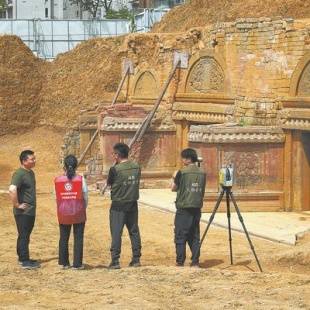On the trail of Prince Duan's tomb


"Among all unearthed tombs of Ming princes of Shu, it's the first time remains of architecture were discovered in front of the mausoleum," says Xie Tao, an associate researcher of Chengdu Institute of Cultural Relics and Archaeology.
The single-building structure itself didn't survive, but there were ruins of corridors and 26 column bases. Xie says they can reconstruct the mausoleum complex's layout based on these findings, providing valuable insights for studying the architectural designs of mausoleums of Ming princes.
"Compared with the tombs of other Ming princes of Shu that have been unearthed, this prince's underground palace is notably smaller with similar structure, about one-third of others' size," he says.
He says it's probably because the prince lived in the late Ming Dynasty — a period of declining economic vitality — with the dynasty collapsing within 32 years of his death.
Bao Shaoyuan, head of Jinjiang district's cultural relics protection office, says finding cultural relics relies on advanced technology as well as local informants. "Cultural relics personnel should go down to the grassroots."
Bao recalls frequently visiting the site to locate Prince Duan's tomb, when farmers still lived there.





































